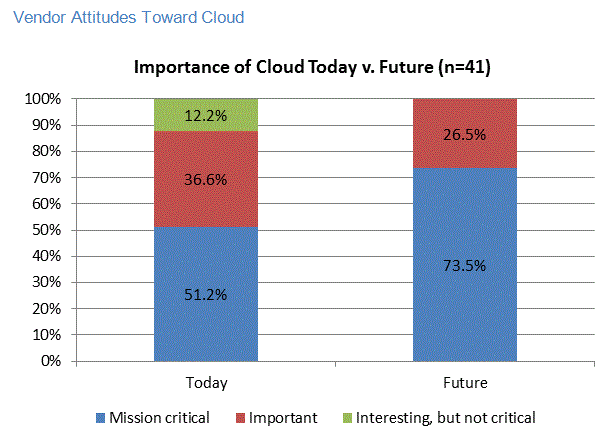Life in the Cloud: Vendor Plans and Priorities
Abstract
Few technologies are as talked about as cloud computing. Cloud services may top the list of technology buzzwords used in corporate board rooms, by Wall Street analysts, in the trade media and within insurance IT organizations, but it often is talked about as an emerging technology, one that is potentially transformative but still little used.
The level of general interest in cloud computing is understandable. It promises tremendous flexibility, tempting economic advantages, and unending operational efficiencies. To that end, insurance carriers are dependent on the cloud offerings available. Only if vendors are offering products on the cloud can carriers take advantage of them.
So where are the vendors? Do all vendors have cloud applications? What options are available for insurance carriers, and are they aligned with carriers on the importance of cloud apps? What challenges do vendors face, and what are their plans for the future?
Forty-one vendors were surveyed to provide answers to these questions as well as to understand pricing models, platform investments, and their expectations of where the market is going. IT leaders at software firms clearly recognize the importance of the cloud to drive their businesses forward.

Over 50% see the cloud as mission-critical to their organization today. Even those with other priorities today recognize the importance of cloud as a key initiative for the future: almost 75% believe it will be mission-critical in the future. Cloud-enabled solutions are on the rise, with more than 80% of responding vendors reporting that they have cloud-enabled core systems. More than 75% have enabled data and reporting solutions, and almost 60% report cloud-enabling document and workflow solutions.
The vendors that responded report that their clients and prospects have significant interest in the cloud. They are highly interested in financial improvements, seeing an overall cost reduction as extremely important. However, they also believe that the shifting of costs from capital expenditures to operating expenses is extremely or very important and believe that having greater predictability of operating expenses is a key driver for many carriers. Business transformation is another reason that vendors believe carriers are moving to the cloud. Cloud deployments can lead to a fast implementation and can be used to rapidly enter new markets.
Although vendors see carriers as highly interested in the cloud, they also report a number of significant concerns. Carriers are cautiously exploring the cloud as they assure themselves of the ability to manage risks. The biggest concerns reported are those having to do with privacy and security, potential theft of intellectual property, and concerns with regulations and legal compliance. They also report carriers as being very concerned about the actual performance of the cloud services: loss of data, performance, availability and bandwidth issues, the ability to integrate to other carrier systems, and the reliability and uptime of the system.
Customer-facing challenges include managing the release cycle across multiple clients balancing front end, customer-facing features reliability and performance enhancing features, and the impact of a changing target market customer base. Vendors are also concerned about identifying the right pricing model. Shifting to a cloud model has a variety of impacts on the overall business model. These include the challenges of switching between a business model based on license sales and professional services to a subscription-based model with a slower buildup of revenues. Other issues include the reduced opportunities for ongoing professional services revenue. Cost management changes under a cloud model. Vendors are concerned with managing the ongoing operational costs of running the service and how to keep the cost low while deploying the hardware and systems engineering needed to maintain the service.
“The massive carrier interest in the cloud has created tremendous opportunities for vendors, but has also created unmistakable challenges for vendors entering this market,” says Karlyn Carnahan, a research director with Celent’s Insurance practice and author of the report. “Vendors looking to win in the cloud market will need to address carrier concerns while managing the operational and cultural challenges inside their own organizations. Those who have not yet put their cloud plans together may want to begin to build a roadmap for the future. “
This report examines cloud practices and attitudes among vendors, the status of cloud solutions, statistics on marketing, including typical pricing models, and an assessment of the significance of the challenges vendors face as they move into the mobile market.

